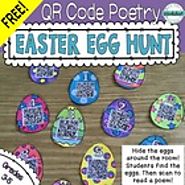-
About
- About Listly
- Community & Support
- Howto
- Chrome Extension
- Bookmarklet
- WordPress Plugin
- Listly Premium
- Privacy
- Terms
- DMCA Copyright
- © 2010-2025 Boomy Labs
 Laura Turner Moore
Laura Turner Moore
Listly by Laura Turner Moore

Create a timelapse video documenting spring.

Whether you're in need of some Easter lessons with a spiritual nature or maybe you're an educator just looking for some seasonal fun. Regardless of your interest, you're going to love bringing this holiday into your classroom with this updated collection of Easter Resources: " Do you and your students have spring fever?

This is a free poetry activity designed to get students up out of their seats, practicing their fluency, and hopefully discovering new poems they enjoy! Here
Starfall is a children's website that teaches basic English reading and writing skills. The main demographic is preschoolers, and kindergarteners. Founded in 2002, the website teaches children how to read by using games and phonics.
Reveals how Earth's tilted axis creates the four seasons: winter, spring, summer, and fall. Also notes the dates of all solstices and equinoxes.
Seasons change during the year. After winter comes spring. Then, there is summer followed by autumn. As autumn ends, winter begins. Why do we have seasons? How do they follow a cycle? Let’s find out.

TOUCH this image to discover its story. Image tagging powered by ThingLink

April is National Poetry Month! ReadWriteThink.org! As you’re planning poetry activities during this month (and beyond!) consider using these poetry-focused ReadWriteThink.org interactive tools a

To help teachers incorporate Earth Day into the classroom, Matt Davis has compiled and curated some of the best classroom resources from around the web.

BrainPOP, Book Creator, and Adobe Voice can help students articulate their ideas and share their Earth Day-related projects about living in balance with nature.

In this interactive activity adapted from the National Arbor Day Foundation, explore the intricate life of a tree. The trunk of a tree functions as both a supporting structure and a pathway, transporting food down from the photosynthesizing leaves and conducting water and minerals up from the roots. Look inside a tree to learn about the xylem, cambium, and phloem, and to see how the tree's rings provide a record of the environmental factors that affected its growth and life cycle.
